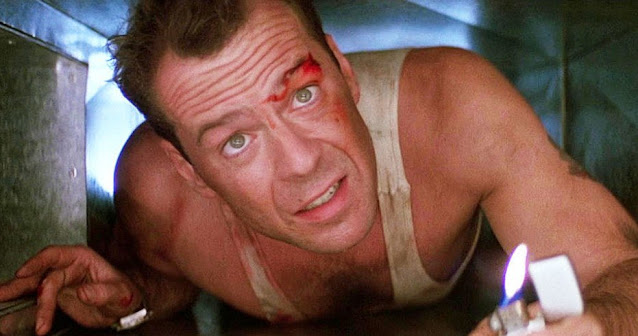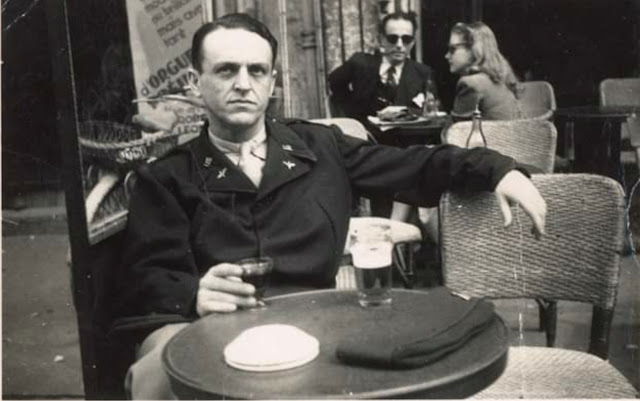Reinventing the Batsuit for the Modern Era
When costume designer Bob Ringwood set out to design the Batsuit, he started from scratch. “I had never even read a Batman comic,” Ringwood said. “So I went out and bought about 200 of them from all the different time periods – including the really early ones – and studied them thoroughly… Then I closed the comics and started thinking about why a man would dress up as a bat – the whole idea is absurd – and I decided that to make it work, I had to come up with a bat that was dark and mysterious and sexy.”
 |
| Michael Keaton as Batman (1989) |
Director Tim Burton thought Ringwood wasn’t too far off the mark. “Aren’t comics all about sex anyway?” Burton asked. “Teens like them because they tune in to sexual fantasy at the exact time they’re going through puberty. Bob’s design was less an outfit, more a complete body suit. It isn’t tights and underwear worn on the outside, but a complete operatic costume to overstate the image ‘Batman’ has of himself. We just took off from the psychology of saying, ‘Here’s a guy who doesn’t look like Arnold Schwarzenegger, so why is he doing this?’ He’s trying to create an image for himself – he’s trying to become something he’s not.”
“I had decided from the beginning that this ‘Batman’ was not going to be in blue knickers,” said costume designer Bob Ringwood. “I hated those. Bats are black, of course – not blue – and black is much more sinister and sexy. After talking to Batman creator Bob Kane, we found out that he had always thought of ‘Batman’ as being in black, but that it was very difficult to draw a black-on-black drawing for the comic strip. So he had drawn it in blue so that he could use different tones of the color for effect. In his mind, the blue was just a symbolic version of black. Our black costume was really nearer the original concept.”
 |
| Batman No. 241 (1972), drawn by Neal Adams |
Though he had signed on to the project very early, Ringwood was reluctant to even begin designing the bat costume until he knew who was going to be playing the role. “I imagined it was going to be a 6’ 4” hunk with a dimpled chin,” said Ringwood. “Michael Keaton is many things, but one thing he is not is a 6’ 4” hunk. It was interesting casting – but because he is average height and a small-built guy, it was a surprise and a bit scary for me. I wasn’t sure how to interpret it. Because Michael is not a real big guy, one of my concerns was that we not make a costume that was so big and so muscular that it would just swamp him. If we had done that, he would not have been able to give a performance – he just would have been lumbering around in sixteen tons of rubber.”
Ringwood sent an assistant to Canada, where Keaton was working at the time, to take head and body casts of the actor. From those molds, a full-size model of Keaton’s body was made in fiberglass. Ringwood said, “It was like having Michael here in the studio – only in fiberglass. I spent a week with Lynne Burman, who is a wonderful sculptress, building up this fiberglass body with clay, trying to get a dynamic shape out of the body. We rejected several of them – some got far too big and looked almost like ‘The Incredible Hulk’ – but finally we came down to a streamlined, aerodynamic version of the muscular body.”
“The Batman bodysuit was very tight-fitting and all of the musculature was glued onto it separately,” said Ringwood. “So even though it looked like it was one piece, it was actually made up of many separate parts – a chest piece, upper arm, lower arm, a crotch and side piece, kneecaps and the lower leg. It had a zipper in the back so that Michael could just step into it. All I really did with the costume was streamline Michael’s body – instead of having him go to a gym for two years. And I think we ended up with a more interesting costume than we would have had if there had been a muscular guy underneath. We were able to exaggerate muscles and stylize them, whereas on a muscular body we would have had just real muscles.”
 |
| Costume designer Bob Ringwood posing for a publicity still for Batman (1989) |
“Michael has a rather round face, yet the image of ‘Batman’ is this very sculptured, chiseled creature," Ringwood recalled. "So we had to ‘chisel’ Michael’s features with the shape of the headpiece. We did that by putting aluminum cheek plates inside his mask every time he put it on.” The ears also presented unforeseen difficulties, Ringwood said. “Making them look sexy was extremely hard. We had to make 10 prototypes just to get them the perfect shape and size. The ears really have no function at all, when you think about it. He doesn’t hear through them and he doesn’t fly with them – they are purely visual. So I figured they were a bit like the ‘go-faster’ fins on 1950s American cars – just nonsense, really, to make him look mean and fast… They had to look tall and elegant, as if they were aerodynamic. Otherwise, they were just ludicrous things with no function – like in the TV program, where Batman wore those silly little mouse ears.”
 |
| Adam West as Batman (1966) |
Ringwood said the cape was by far the most difficult thing to construct. Rubber moved in an unattractive way, rippling rather than swinging. After a series of tests with different fabrics, they settled on a very expensive venetian wool, which they rubberized on one side. The wool was cut into segments like an orange, and a thin sheet of wet rubber with a thin layer of gauze embedded in it bonded the sections of wool together so they didn’t need to be sewn together. “Michael wore a body harness underneath the costume, which had two bolts at the shoulders,” said Ringwood, “and the cape was literally screwed into these bolts on each side. The hardware was covered by the bat symbol, which was bolted onto the chest. So there was a lot of understructure holding the cape in place. If there had not been, the weight of it when he swung around would have torn the entire costume right off his body.”
 |
| Bob Ringwood concept drawing for Batman (1989) costume |
Bob Ringwood's sculpted latex Batsuit design required 28 bodies to accommodate both Keaton and his stunt doubles, 25 different cape looks, and 6 different heads – all at a cost of $250,000. At first it took two and a half hours to get Keaton into the suit, though eventually the costume team got it down to 20 minutes. “The hardest thing was learning how to move in the suit,” Keaton said. “I don’t necessarily mean run and jump and fight. I mean, how to move to get the optimum effect. To turn your head so the lights catch it right, because it’s very dramatic and operatic. Learning how to do that is not easy.”
Second unit director Peter MacDonald watched as Keaton struggled with the challenges of the Batsuit. “Michael Keaton tried to do all his own stunts, but it’s harder than normal to do that when you’ve got this almost immovable suit on,” MacDonald said. “You have to be a kind of superman to be able to move. So we had the normal stunt guy and we had a martial arts guy, and we had a ballet dancer. The ballet dancer was the one that did the walk in, because this guy could swish his cape and look great, you know – and then two quite tough guys to do the fighting.”
For director Tim Burton, the Batsuit was one of Batman’s biggest challenges. “The toughest thing was making him look good,” recalled Burton. “We’d try all sorts of movements. Then we’d say, ‘How about changing your voice?’ Sometimes Michael really looked like a kid with a towel around his neck. The outtakes from this film look like a bad Italian gladiator movie.”
Jody Duncan Shannon, “A Dark and Stormy Knight,” Cinefex, 2/90
Alan Jones, “Batman in Production,” Cinefantastique, 11/89
Hilary de Vries, “Batman Battles for Big Money,” New York Times, 2/5/89
Susan Spillman, “Will Batman Fly?” USA Today, 6/19/89
Bob Strauss, “Keaton Takes On Tale from the Dark Side,” Chicago Sun-Times, 6/25/89
Mark Salisbury, Burton on Burton, Faber & Faber, 2006
Batman DVD, Beyond Batman DVD Bonus Material


Comments